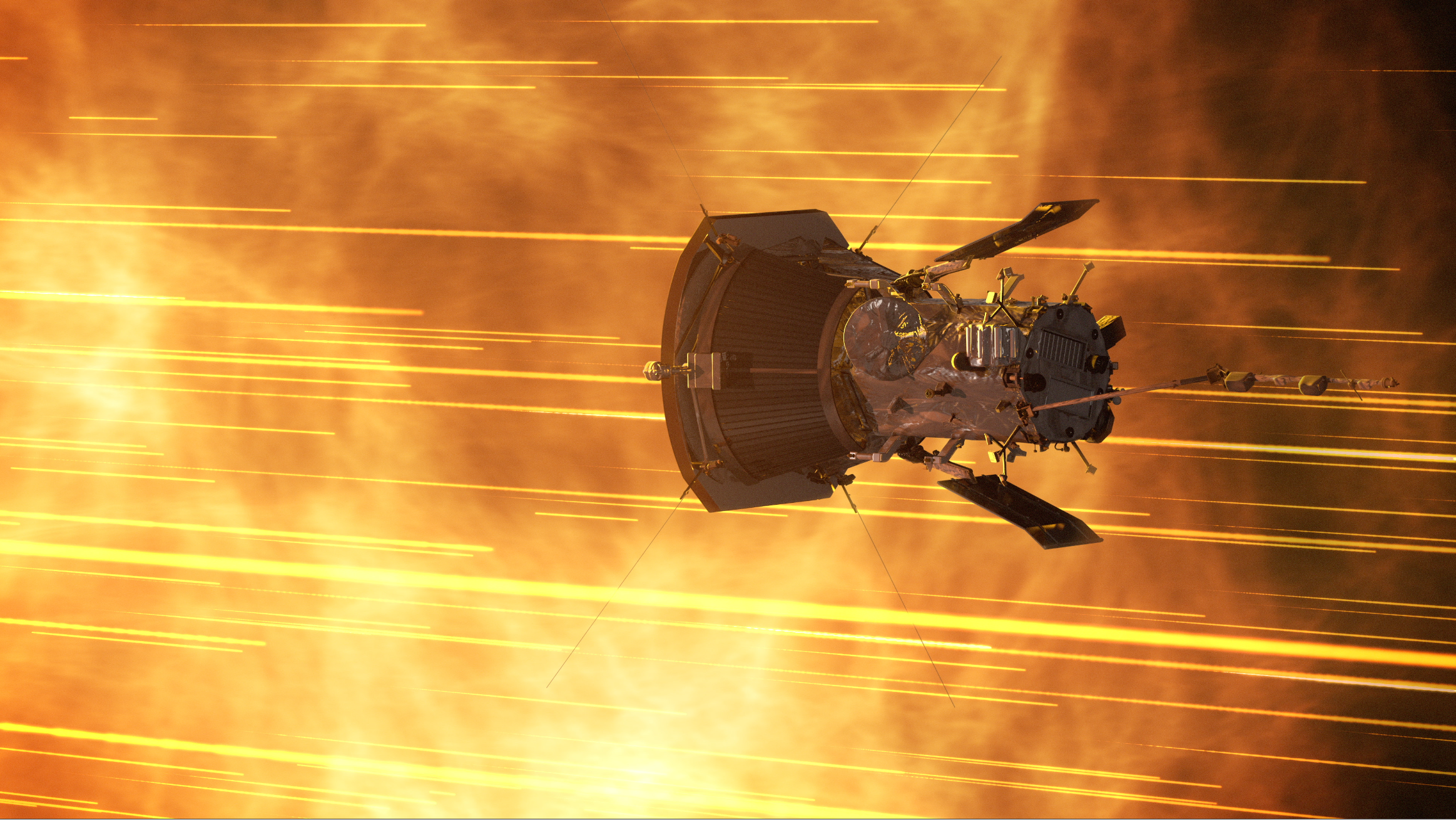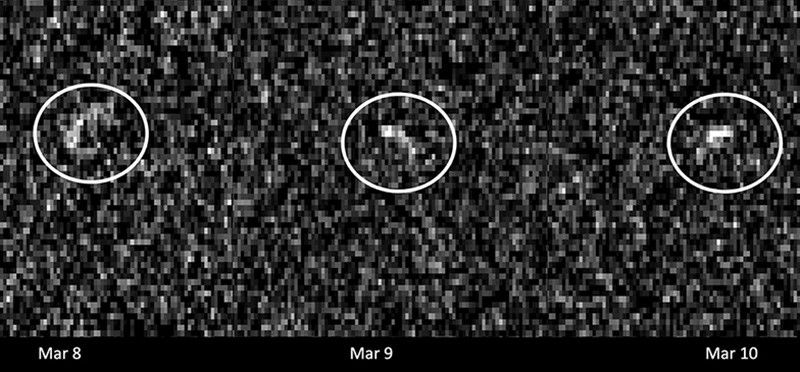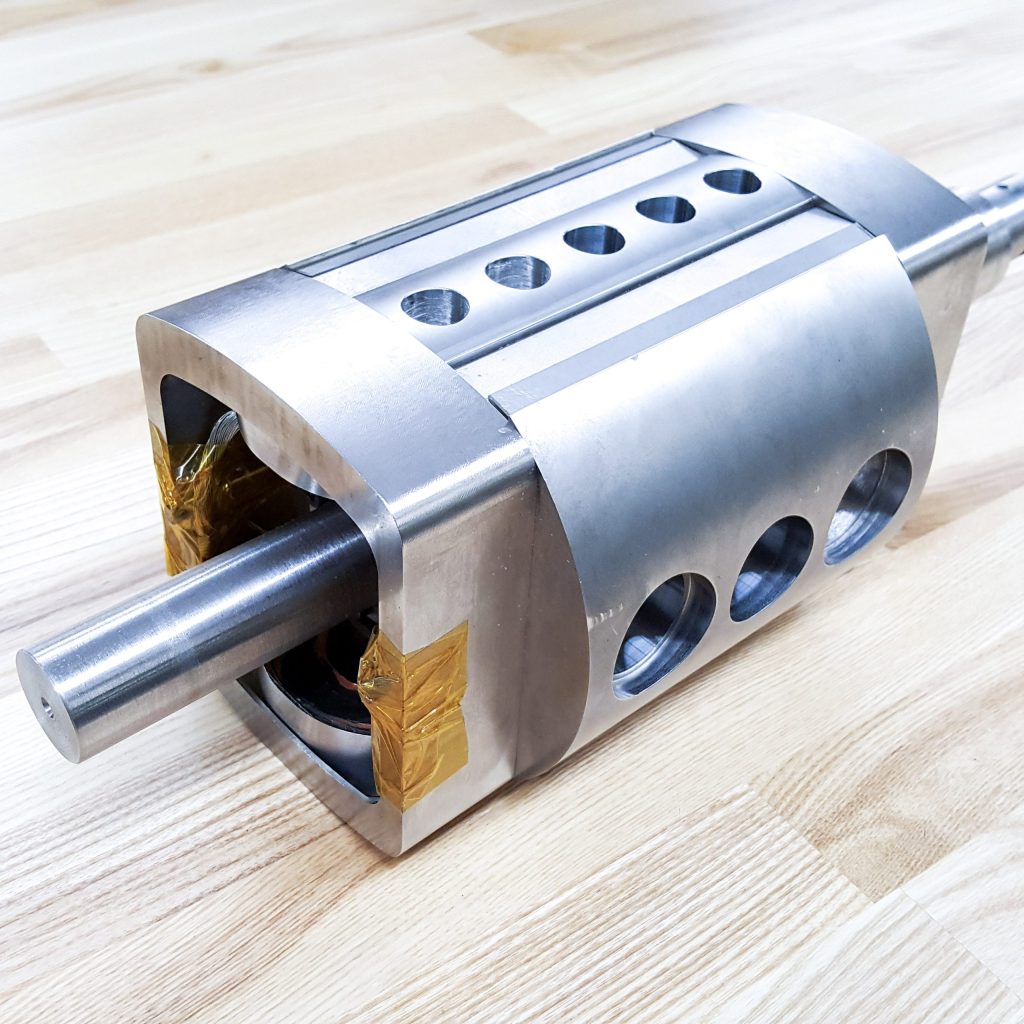On Sept. 20, 1972, NASA astronauts Robert L. Crippen, Dr. William E. Thornton, and Karol J. “Bo” Bobko completed a critical mission that never left the ground. In preparation for the upcoming Skylab space station program, they conducted a 56-day simulation in an altitude chamber at the Manned Spacecraft Center (MSC), now NASA’s Johnson Space Center in Houston. The Skylab Medical Experiment Altitude Test (SMEAT) served to obtain baseline medical data on the crew and to test some of the hardware and experiment procedures planned for use aboard the space station, then planned for launch in April 1973. Conditions in the test chamber simulated the planned Skylab atmosphere. The lessons learned from SMEAT greatly enhanced the success of the Skylab missions.
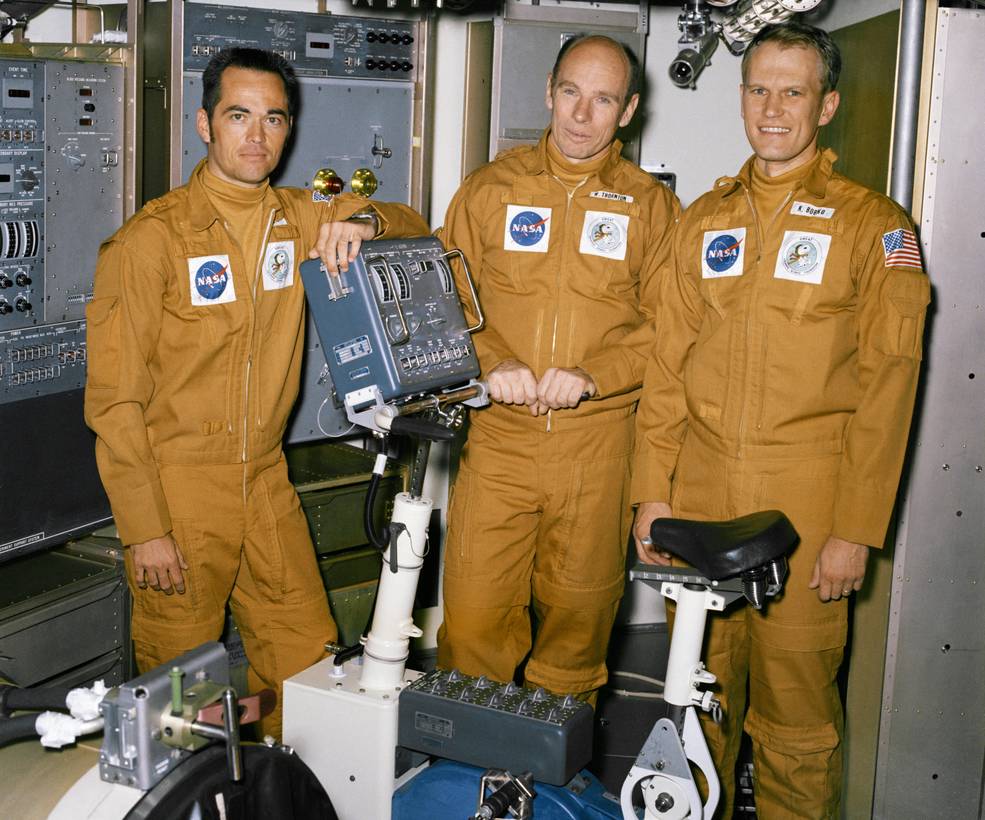
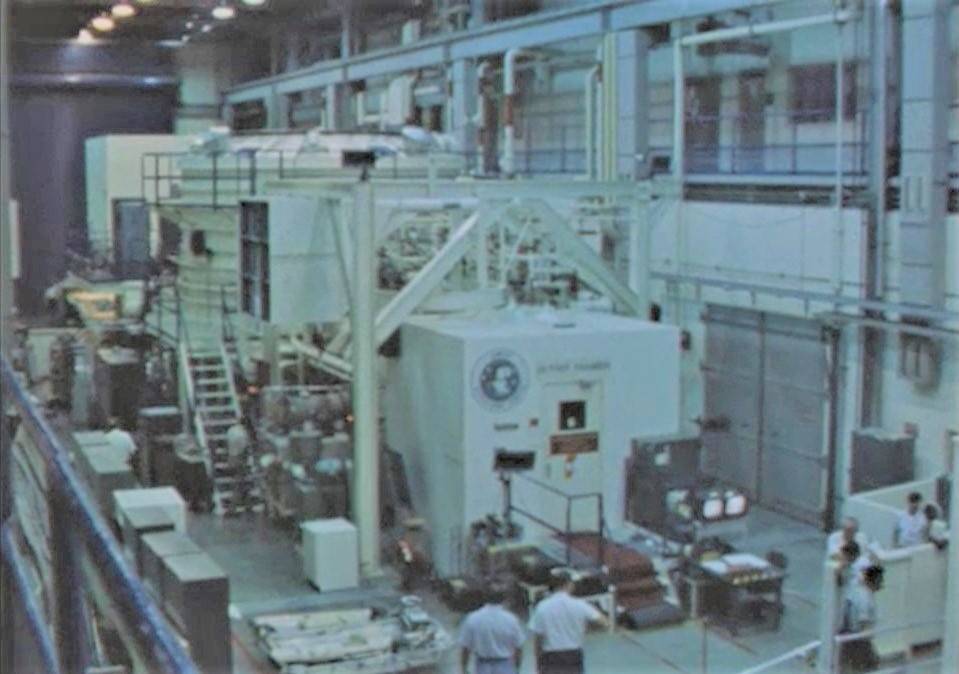
Left: Astronauts Robert L. Crippen, left, Dr. William E. Thornton, and Karol J. “Bo” Bobko, the Skylab Medical Experiment Altitude Test (SMEAT) crew. Right: External view of the 20-foot altitude chamber where SMEAT took place.
Skylab, America’s first space station, flew in 1973 and provided NASA with the first opportunity to study human adaptation to long-duration spaceflight. To ensure maximum results from the planned missions, NASA planned a ground-based simulation to test out hardware and procedures in a near-flight environment. The agency approved SMEAT in February 1971 and four months later assigned Crippen, Thornton, and Bobko as the crew. The objectives of SMEAT included acquiring baseline medical data for a set of experiments that reflected the effects of the Skylab environment (with the exception of weightlessness), evaluating selected experiment hardware and procedures, assessing medical support operations, and training the ground teams for supporting long-duration Skylab operations. The Crew Systems Division’s altitude chamber in MSC’s Building 7 served as the site for SMEAT. With its 20-foot diameter, the chamber functioned as a good model for Skylab’s 22-foot diameter Orbital Workshop’s lower level, the location of the crew sleep stations, the wardroom and dining table, the exercise equipment, and most of the medical experiments. Although the chamber did not have the large volume of the workshop’s upper level, its second level served as a quiet space equipped with desks and chairs for the crew to work. To simulate the planned Skylab atmosphere, the altitude chamber remained at a gas mixture of 70% oxygen and 30% nitrogen at a pressure of five pounds per square inch (psi) for the duration of the 56-day test.
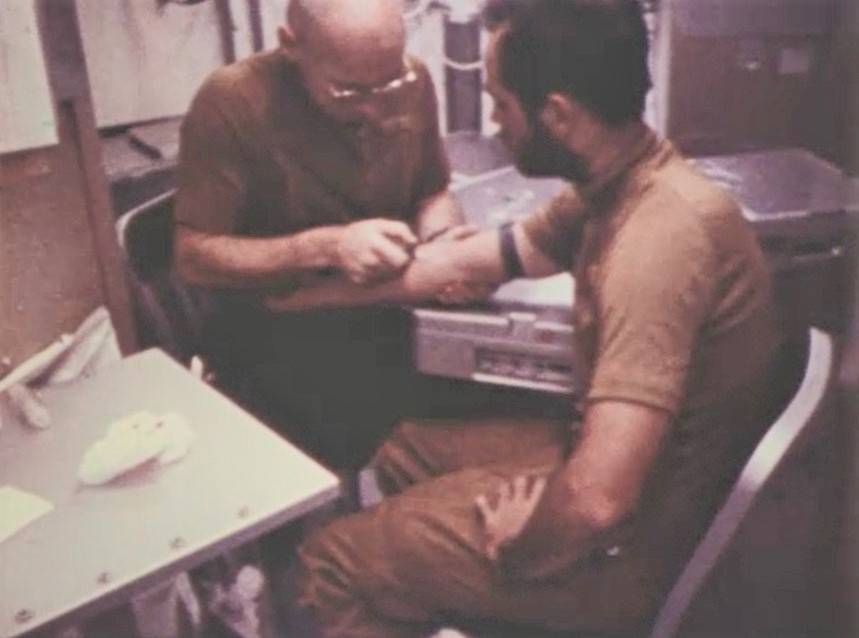
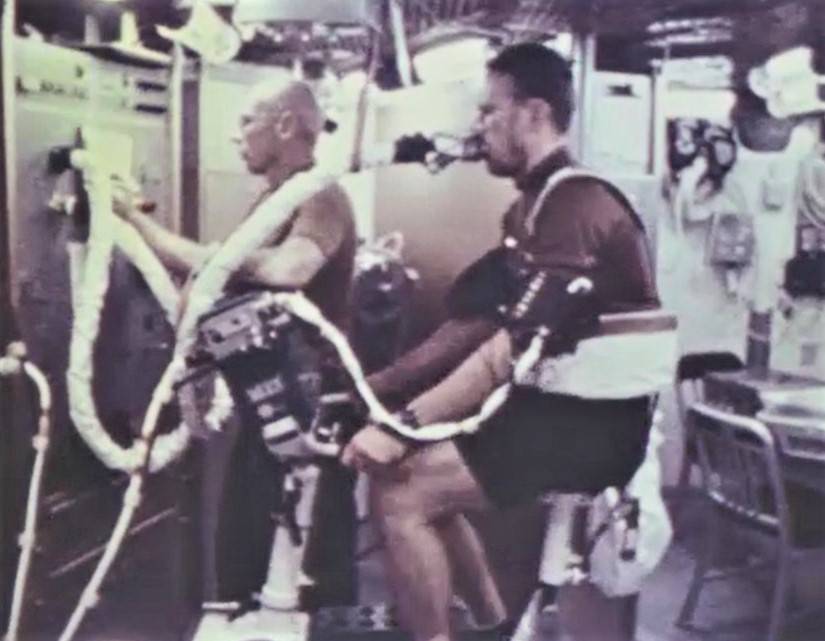
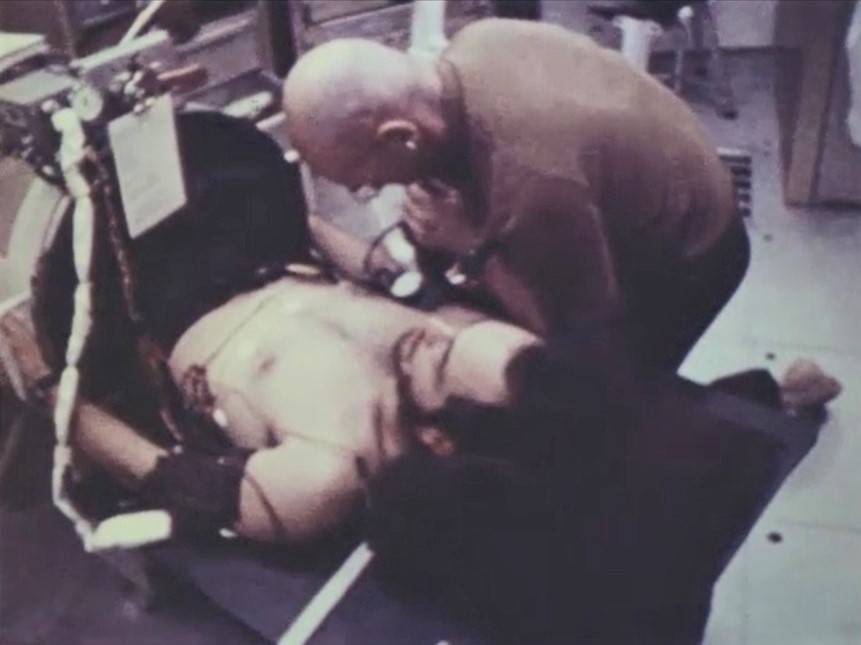
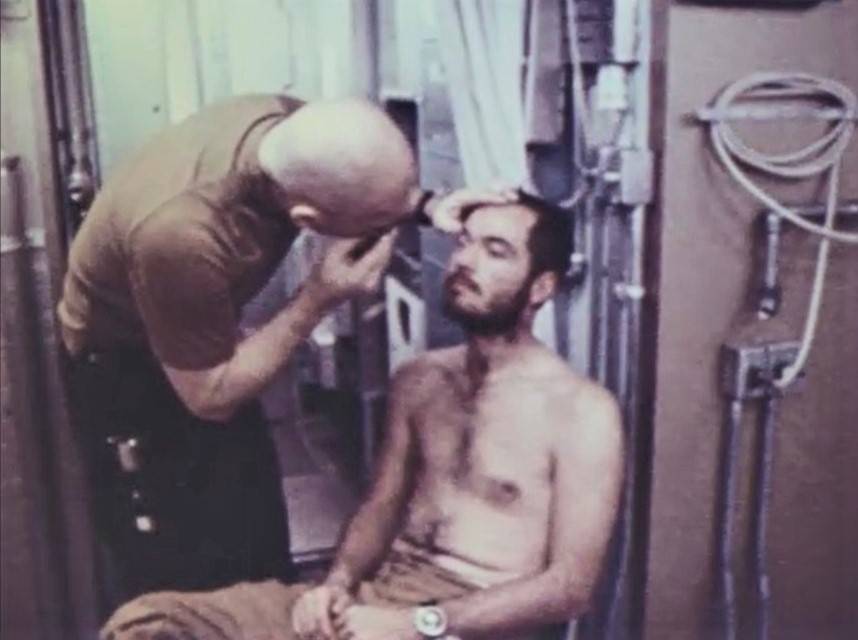
Medical experiments. Left: Astronaut Dr. William E. Thornton, left, drawing blood from fellow astronaut Robert L. Crippen. Middle left: Thornton monitors fellow astronaut Karol J. “Bo” Bobko as he rides the bicycle ergometer to monitor his metabolic and cardiopulmonary function. Middle right: Thornton takes Crippen’s blood pressure during a run in the Lower Body Negative Pressure Device. Right: Thornton performs a fundoscopic eye exam on Crippen.
In the unexpected presence of news media and a large crowd of well-wishers, Crippen, Thornton, and Bobko entered the chamber on July 26, 1972, to begin their 56-day simulated Skylab mission. During SMEAT, they conducted 14 of the Skylab medical experiments to study changes in the cardiovascular, musculoskeletal, endocrine, and neurologic systems. They also completed 15 Detailed Test Objectives, designed to evaluate various engineering and human factors aspects of the mission. The medical tests had actually begun 28 days earlier when they began to rigorously adhere to the Skylab diet and collecting urine and fecal samples as required by the metabolic experiment.
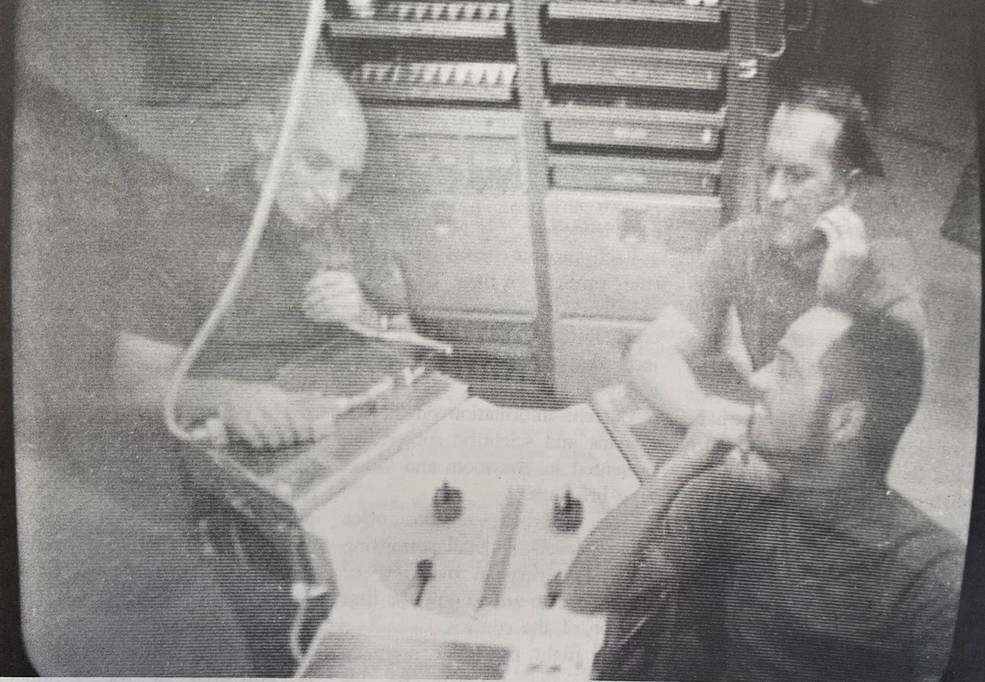
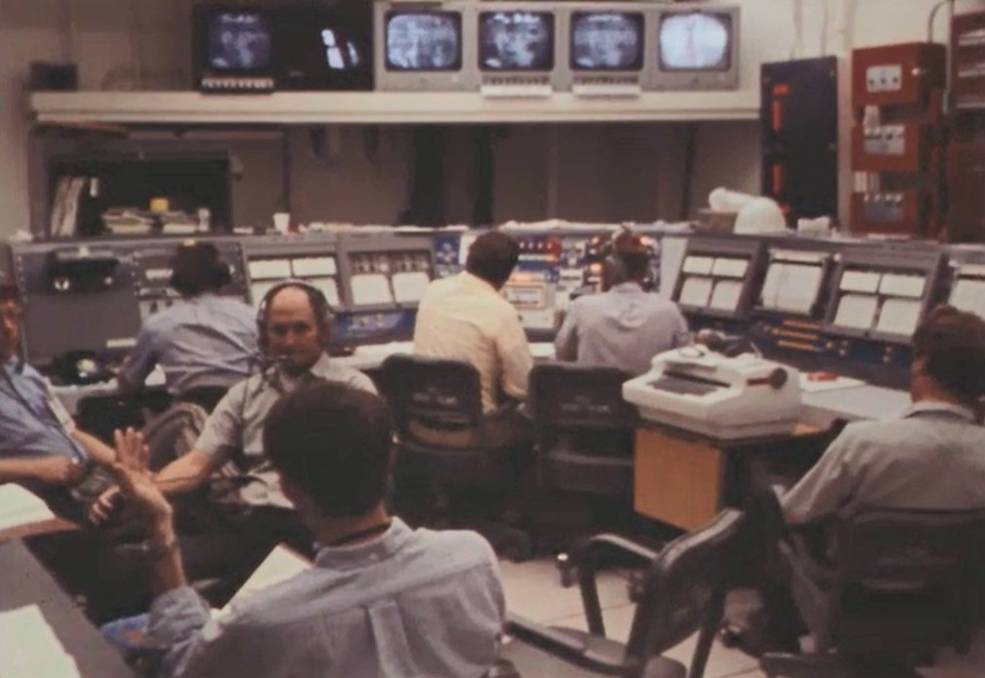
Left: The SMEAT astronauts Dr. William E. Thornton, left, Karol J. “Bo” Bobko, and Robert L. Crippen seated around the wardroom table, as seen on closed-circuit television during the first of two press conferences during the test. Right: Engineers in the chamber’s control room monitor the progress of SMEAT.
Crippen, Thornton, and Bobko settled into their new home for the next two months and began their science program. Communications with controllers on the outside proceeded as they would during an actual mission, with the astronauts talking with a capsule communicator, or capcom. The test also simulated the frequent communications outages since Skylab relied on ground stations for all space-to-ground contacts, with acquisition-of-signal periods available about 20 percent of the time. Chamber controllers had the added benefit of monitoring the crew via closed-circuit TV. As during an actual Skylab mission, principal investigator teams received experiment data in a Science Support Room in MSC’s Building 36. The astronauts experienced the first major problem during the test’s second day when the bicycle ergometer, not only the crew’s primary mode of exercise but also a vital component of the cardiovascular and metabolic experiments, failed. They passed it out through the manlock. Engineers repaired it and returned it to the chamber the next day, but with strict limits on the loads the astronauts could place on it until they could fully understand the failure mode. Four days later, engineers passed in a second ergometer so the crew could exercise at their preferred higher loads. The event highlighted the error of relying on a single mode of exercise – astronauts aboard Skylab would not have the luxury of having a new ergometer delivered to them. Just as on Skylab, for hygiene the astronauts availed themselves weekly of the shower. During the 56-day test, the astronauts held two press-conferences via closed-circuit television, showing reporters the equipment in the chamber.
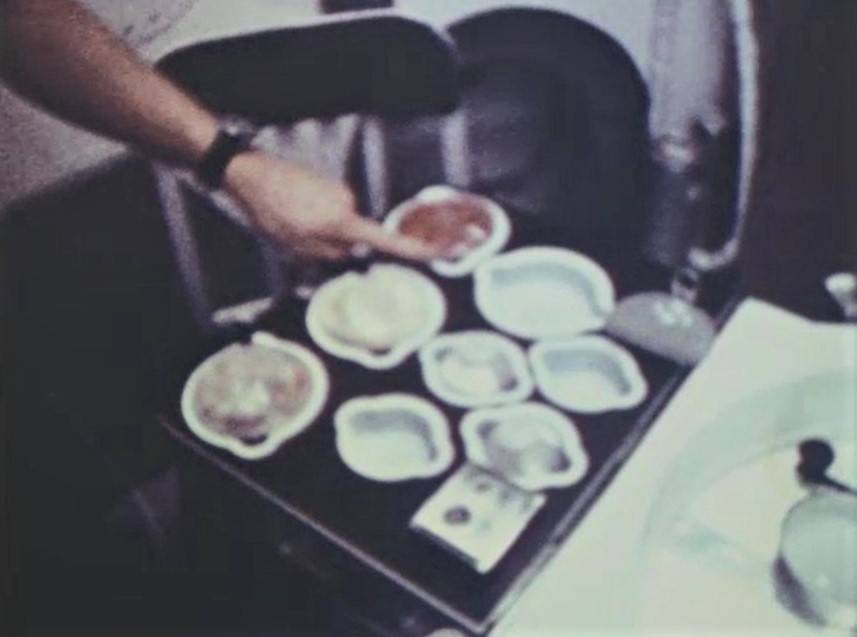
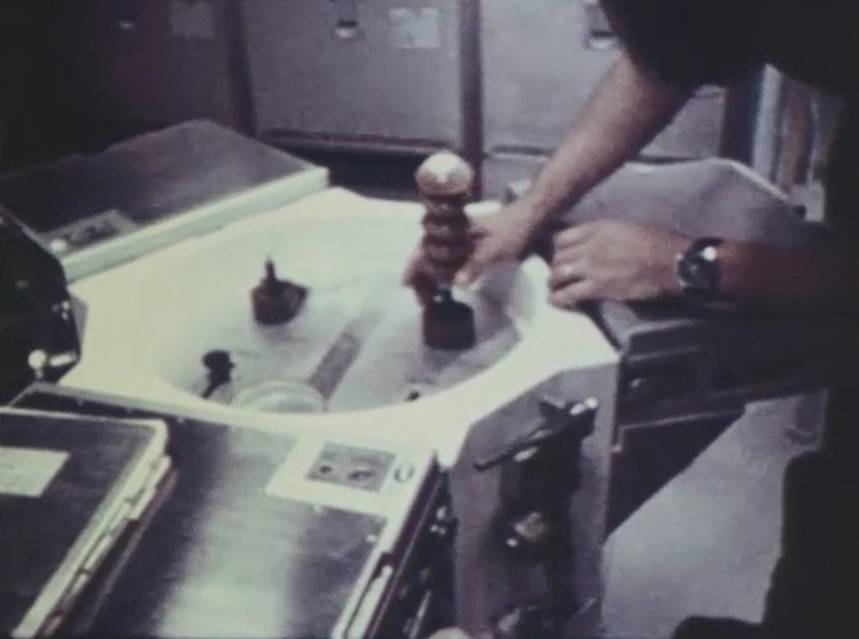
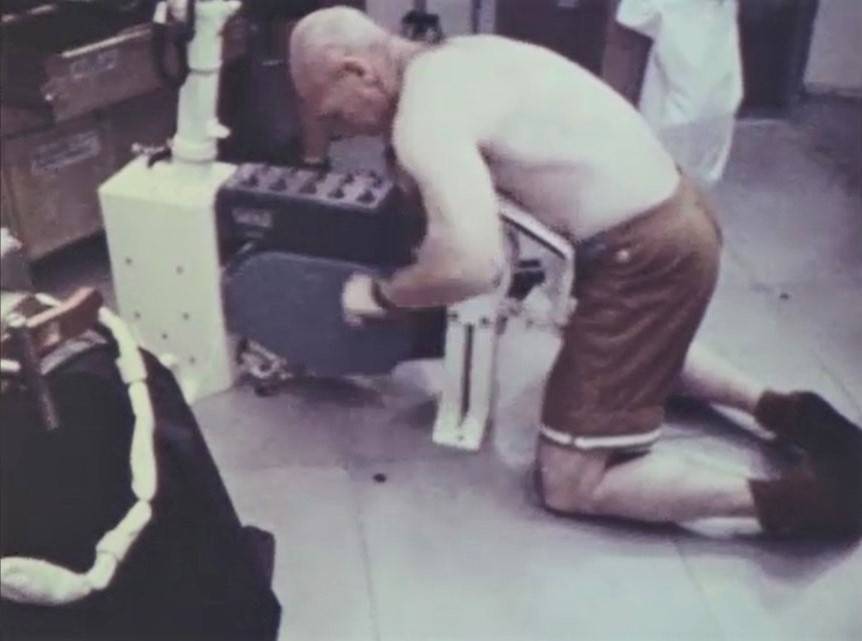
Left: One of the Skylab Medical Experiments Altitude Test (SMEAT) astronauts demonstrates the food tray in the chamber’s galley. Middle: One of the SMEAT astronauts demonstrates dispensing a drink into a collapsible beverage container. Right: SMEAT astronaut Dr. William E. Thornton uses the bicycle ergometer to exercise his upper body.
The medical experiments called for the astronauts to adhere to a strict six-day meal plan, and to record all items consumed. Most of the prepared food items came in cans that the crew heated in the galley or food pedestal, similar to the actual one on Skylab. With one notable exception, the SMEAT astronauts experienced no significant changes in any of their physiological parameters. The glaring exception involved Thornton’s 19-pound weight loss, begun as soon as he started the Skylab diet one month before entering the chamber. The approximately one and one-half pound weight loss per week continued throughout the 56-day chamber test and even during the 18-day posttest restricted diet period. The weight loss resulted from the investigators not considering Thornton’s greater baseline weight and exercise regimen compared to Crippen and Bobko. He simply needed more calories, but the diets did not differentiate among crew members. Even taking supplementary carbohydrates such as cookies and lemon drops didn’t slow the weight loss. The investigators partially rectified the diet issue for the actual Skylab missions, but they based caloric needs on an incorrect assumption that astronauts require fewer calories in weightlessness. Thus, the first two crews also lost significant weight until the investigators corrected the diets for the third crew.
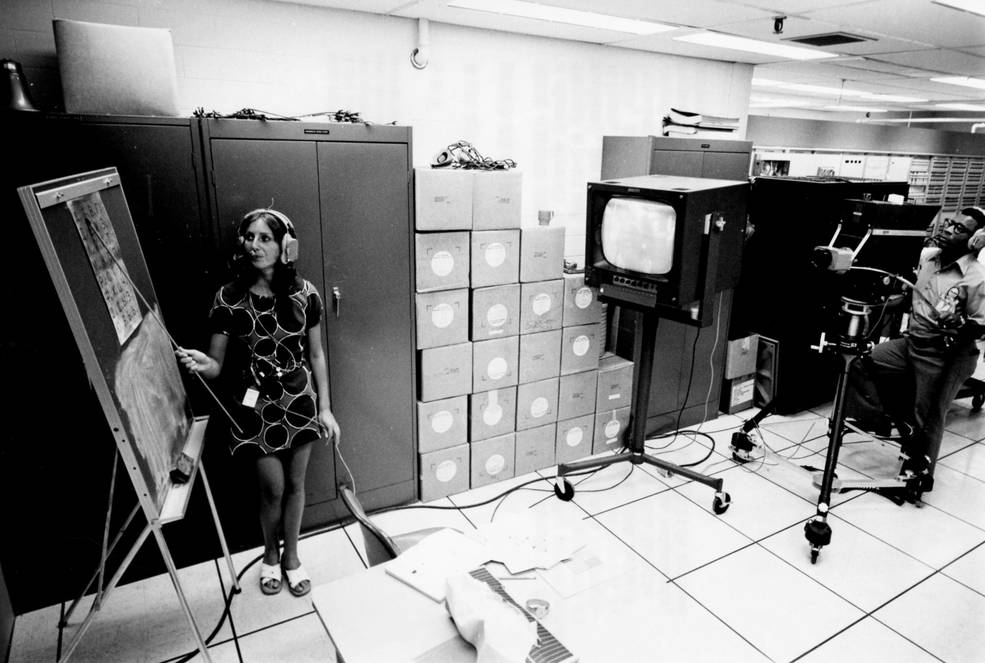
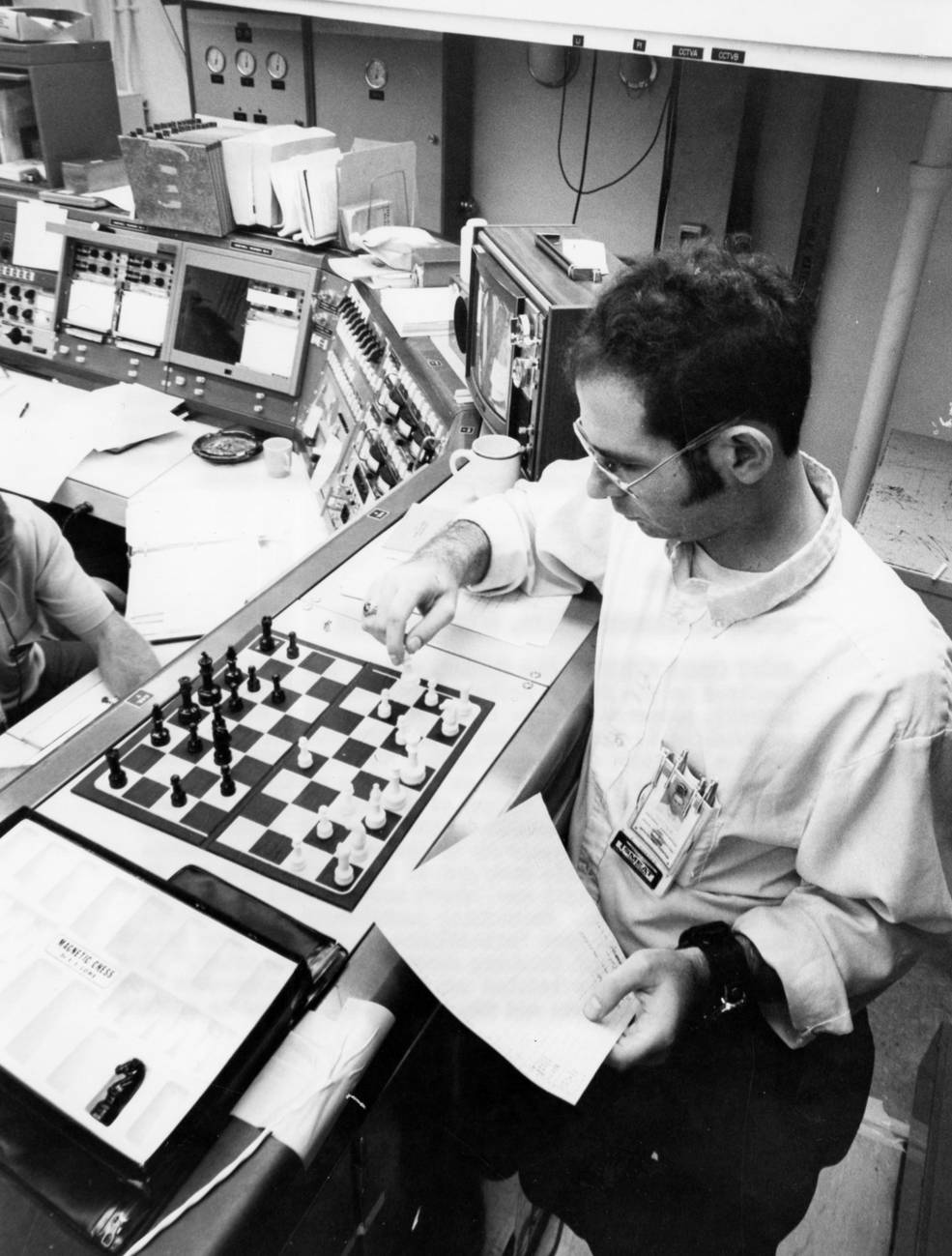
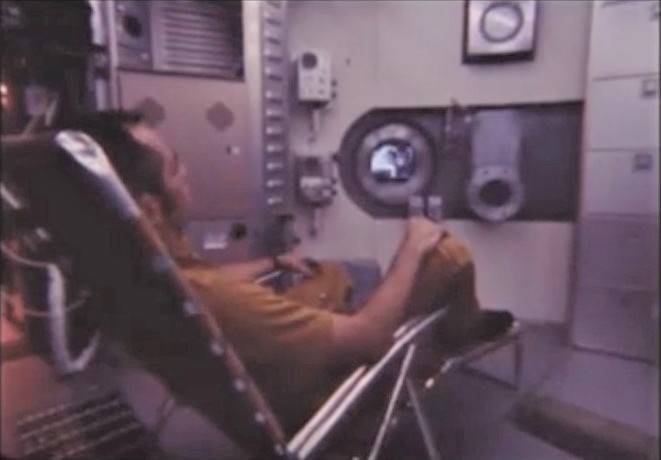
Leisure time during the Skylab Medical Experiment Altitude Test (SMEAT). Left: Russian language instructor Lilla Carson, left, teaching a Russian class via closed-circuit television to SMEAT astronauts Although Robert L. Crippen, Dr. William E. Thornton, and Karol J. “Bo” Bobko. Middle: Test director Kenneth S. Snyder contemplates his next daily move in the ongoing chess game with SMEAT crew member Crippen inside the chamber. Right: Crippen relaxes in a lawn chair watching TV.
Although the medical experiments and routine maintenance of the chamber took up most of their time, the astronauts did have some available leisure time, with one day a week designated as a non-working day. All three took Russian language classes, with an instructor providing lessons via closed circuit television. They also took technical classes on the workings of the Apollo Command Module, astrodynamics, solar physics, and electronics. They also built models, read books, listened to music, and watched movies. Crippen played two one-move-a-day games of chess with test directors. The astronauts visited with their families regularly via a telephone line, and twice via closed-circuit television. Also via closed-circuit, test controllers and fellow astronauts helped Crippen celebrate his 35th birthday on Sept. 11, shortly before the end of the test.

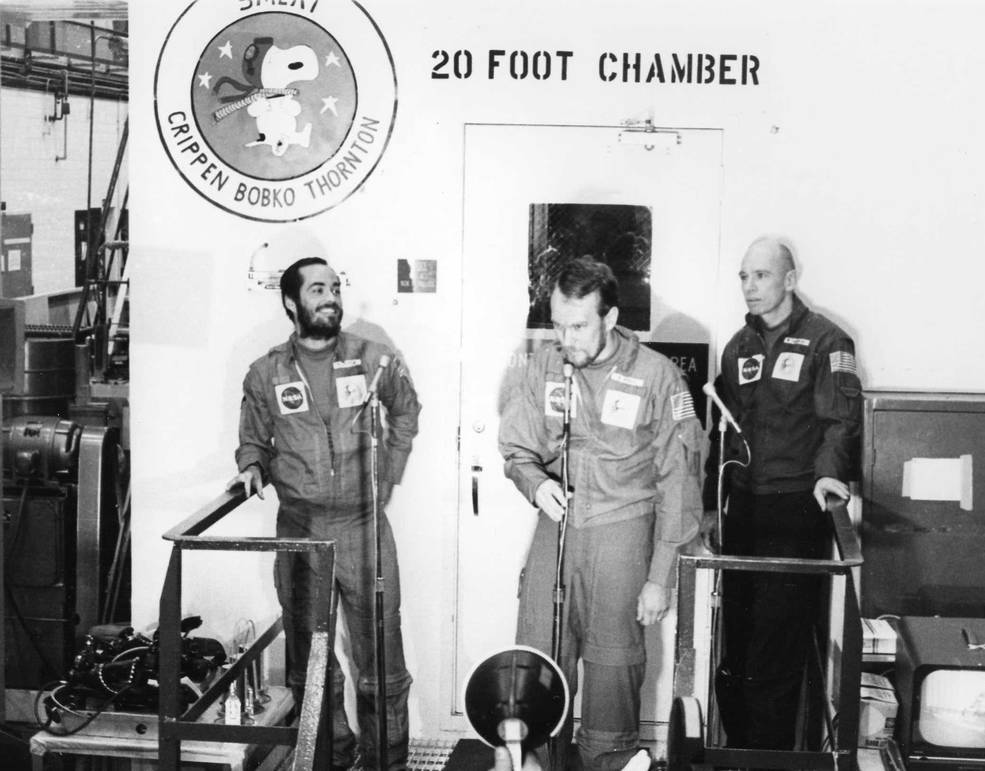
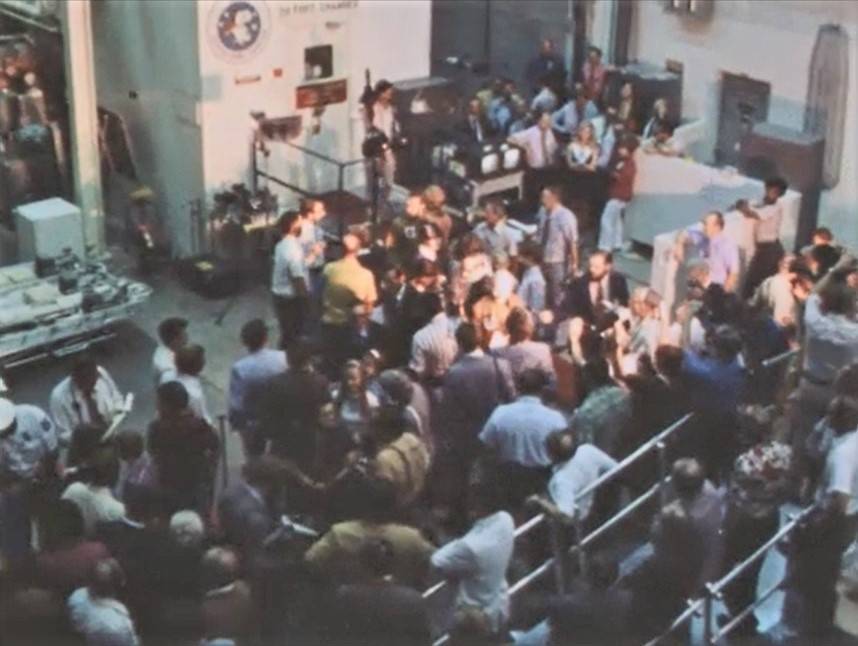
Left: Ground support personnel, including astronauts Joseph P. Allen, fourth from left, Richard H. Truly, Russell L. Schweickart, and Edward G. Gibson, help celebrate crew member Robert L. Crippen’s 35th birthday via closed circuit television. Middle: Astronauts Crippen, left, Karol J. “Bo” Bobko, and and Dr. William E. Thornton speak to assembled family, co-workers, and the press after their exit from the chamber, concluding the 56-day Skylab Medical Experiments Altitude Test. Right: Family, co-workers, and media greet the astronauts after the conclusion of the chamber test.
On Sept. 20, 1972, at 7 a.m., Crippen, Thornton, and Bobko, exited the chamber, having successfully completed the 56-day Skylab simulation. The trio addressed their families, fellow workers, and the press assembled to greet them, with Crippen and Bobko sporting beards. Although their time in the chamber had ended, the astronauts’ SMEAT duties continued. For 18 more days, they adhered to the monitored Skylab diet and collected urine and fecal samples for the metabolic study, so the test really ended on Oct. 9. During this time, they wrote their mission report, debriefed all aspects of the test with engineers and managers, and held a press conference with reporters. The SMEAT mission resulted in numerous lessons learned and improvements to hardware and procedures that contributed greatly to the eventual success of the Skylab orbital missions, generating the first data set of human responses to long-duration spaceflight. SMEAT established a standard for later mission simulations that helped such programs as Spacelab, and current simulations such as the Human Exploration Research Analog (HERA) to prepare for exploration missions of the future.
Astronauts Crippen and Bobko talk about their SMEAT experiences in their oral histories with the JSC History Office.
John Uri
NASA Johnson Space Center


